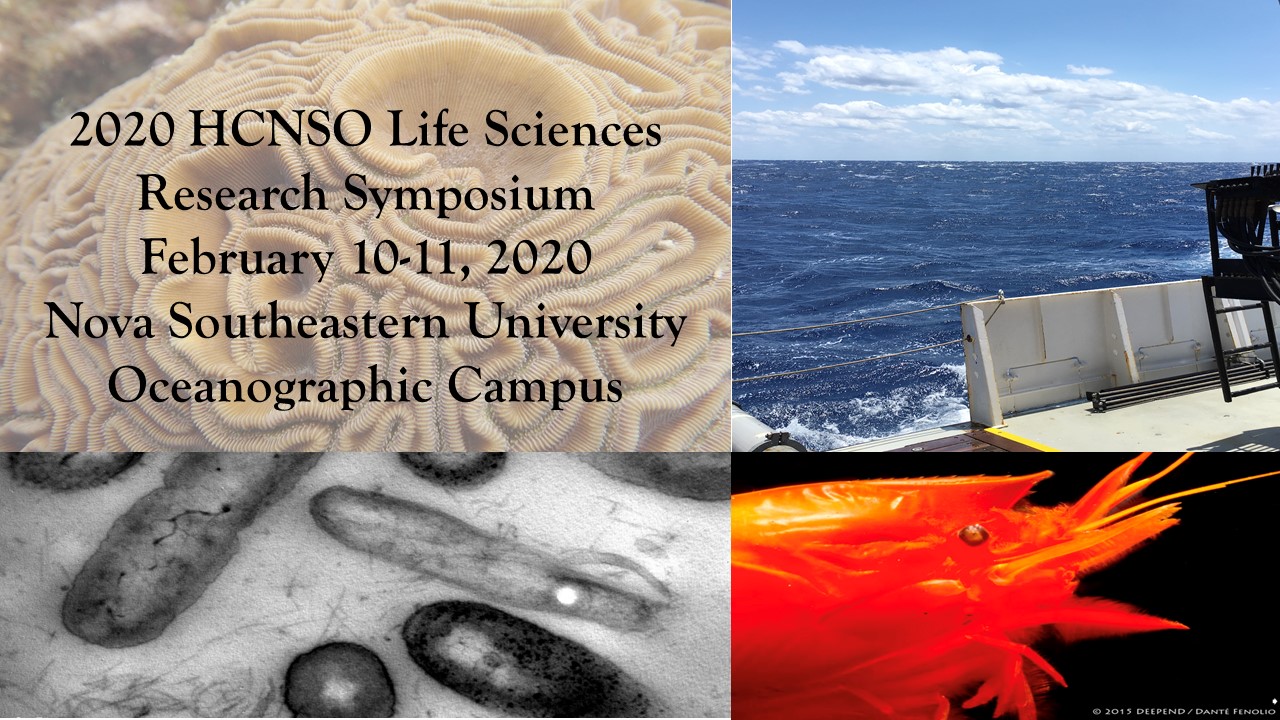Using satellite telemetry to identify internesting areas of adult female loggerhead (Caretta caretta) and green (Chelonia mydas) sea turtles that nest in Broward County, Florida, USA
Location
HCNSO Guy Harvey Oceanographic Center Nova Southeastern University
Start
2-11-2020 11:00 AM
End
2-11-2020 11:15 AM
Type of Presentation
Oral Presentation
Abstract
Hosting 90% of nesting for the North Atlantic loggerhead (Caretta caretta) and a substantial portion of the green (Chelonia mydas) sea turtle populations, Florida is a vitally important regional rookery. In southeast Florida, sea turtle nesting has been reliably monitored for over two decades, revealing an abundance of information about overall population trends for these subpopulations. However, little research has been done to assess the ecology of the female turtles that nest in this region. Limited satellite telemetry studies have been performed, though these are typically opportunistic, relying on healthy animals being released from local rehabilitation centers after treatment. Population genetic analyses have also been conducted, revealing stock structures within the North Atlantic, but many questions remain unanswered concerning the adult life stages of these species. As protected species, it is vitally important to identify and understand the core-use habitats during and between nesting cycles, including major migratory corridors, foraging grounds, and internesting grounds. Over the past three nesting seasons, we have used satellite telemetry to study the internesting and postnesting movements of 15 loggerhead and 15 green sea turtles from Broward County beaches. Using switching state-space models and kernel density estimation, we have identified major internesting areas for each species. Internesting habitat varied from Broward County waters, eastern central Florida, northern Bahamas, and areas of Miami, FL. Though most turtles remained local, some animals travelled 80 km or more between nesting events. Additionally, tracks from several animals suggested subsequent nesting events outside of Broward County.
ACKNOWLEDGEMENTS: We would like to thank the Community Foundation of Broward, Rock the Ocean Foundation, and Nova Southeastern University-Presidential Faculty Research and Development Grant for their generous support of this project.
Using satellite telemetry to identify internesting areas of adult female loggerhead (Caretta caretta) and green (Chelonia mydas) sea turtles that nest in Broward County, Florida, USA
HCNSO Guy Harvey Oceanographic Center Nova Southeastern University
Hosting 90% of nesting for the North Atlantic loggerhead (Caretta caretta) and a substantial portion of the green (Chelonia mydas) sea turtle populations, Florida is a vitally important regional rookery. In southeast Florida, sea turtle nesting has been reliably monitored for over two decades, revealing an abundance of information about overall population trends for these subpopulations. However, little research has been done to assess the ecology of the female turtles that nest in this region. Limited satellite telemetry studies have been performed, though these are typically opportunistic, relying on healthy animals being released from local rehabilitation centers after treatment. Population genetic analyses have also been conducted, revealing stock structures within the North Atlantic, but many questions remain unanswered concerning the adult life stages of these species. As protected species, it is vitally important to identify and understand the core-use habitats during and between nesting cycles, including major migratory corridors, foraging grounds, and internesting grounds. Over the past three nesting seasons, we have used satellite telemetry to study the internesting and postnesting movements of 15 loggerhead and 15 green sea turtles from Broward County beaches. Using switching state-space models and kernel density estimation, we have identified major internesting areas for each species. Internesting habitat varied from Broward County waters, eastern central Florida, northern Bahamas, and areas of Miami, FL. Though most turtles remained local, some animals travelled 80 km or more between nesting events. Additionally, tracks from several animals suggested subsequent nesting events outside of Broward County.
ACKNOWLEDGEMENTS: We would like to thank the Community Foundation of Broward, Rock the Ocean Foundation, and Nova Southeastern University-Presidential Faculty Research and Development Grant for their generous support of this project.


